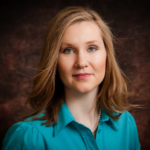Tens of millions of children could attend schools of choice if $35 billion of their federal K-12 dollars follow them there, as two U.S. Senators proposed on January 28.
Whether those schools would be public-only or include both private and public would be up to state lawmakers, said Sen. Lamar Alexander (R-TN) and Sen. Tim Scott (R-SC).
Alexander’s bill would shift approximately 41 percent of federal education spending from 80 programs into 11 million scholarships of $2,100 each. If states chose, parents below the federal poverty line could use the money for expenses such as tuition, extracurricular activities, tutoring, and homeschooling materials. Scott’s bill would work similarly for federal special-education spending and create a pilot vouchers program on five military bases.
“Equal opportunity in America should mean that everyone has the same starting line, as much as possible,” Alexander said, announcing his proposal at the American Enterprise Institute (AEI) in Washington DC.
States that choose to distribute their federal education funds this way would be exempt from some provisions of No Child Left Behind, such as the federal designation of and sanctions on low-performing schools, but still required to test public school students in grades 3-8 and high school.
‘Restoration of Dignity’
Scott explained his support for school choice by telling some of his life story. He was seven when his parents divorced. He moved with his mother from an Air Force base in Michigan to a two-bedroom house with his grandparents in Charleston, South Carolina, then proceeded to fail numerous classes in high school.
“This mess I created in my life is why education is so important to me personally,” he said. “I think I’m the only senator to fail civics.”
He illustrated further by telling about Rachel Lewis, a South Carolina girl with Down’s Syndrome. Her parents loved her elementary school but had to move to an area where the local public school “did not want to properly educate this young lady.” The Lewises fought for a year for Rachel to have the education they wanted.
“Then the light went off,” Scott said. “The very people they had to fight with to get a good opportunity for little Rachel were going to be in charge of educating little Rachel. So they decided that was not right.” The Lewises sent Rachel to small private school called Hidden Treasure. She graduated from high school and now works two jobs.
“We create portability so those parents have the resources to ensure kids like Rachel maximize their potential,” Scott said. “I consider that the restoration of dignity.”
Conversation about Helping the Poor
The senators took pains to emphasize their interest in helping the needy, contrasting their approach with President Obama’s redistributive policies he reinforced in that evening’s State of the Union address.
“I’d like for students to have the broadest possible choice of schools. Of course, the wealthiest students already do. It’s the low income students who have the least amount of choice,” Alexander said. “[Our proposals are] a solution addressed to state governments more than the federal government. I don’t think it should be mandated from Washington, even if it’s a policy I favor.”
While “there’s no secret sauce that is perfect,” Scott said, many states have focused on the neediest kids—the poor and disabled—to improve education overall.
Will It Pass?
“It’ll take work on the Senate floor … to do this,” Scott said. Republicans have tried to enact federal school choice legislation since Ronald Reagan was president, and so far have failed. Florida Sen. Marco Rubio introduced federal tax-credit scholarship legislation in 2013 that has also gone nowhere. The likely answer, Scott said, is electing more senators that support school choice.
Alexander noted Democrats support government vouchers for other services, such as Pell grants for college, the G.I. bill, Medicare, and food stamps.
“The idea of allowing federal dollars to follow students to schools has been a successful strategy for 70 years,” he said, contrasting the nation’s well-regarded higher education “marketplace” with its mediocre-performing K-12 system.
“My hope is our agenda will be to liberate the free enterprise system,” Alexander said.
Image by Gage Skidmore.





